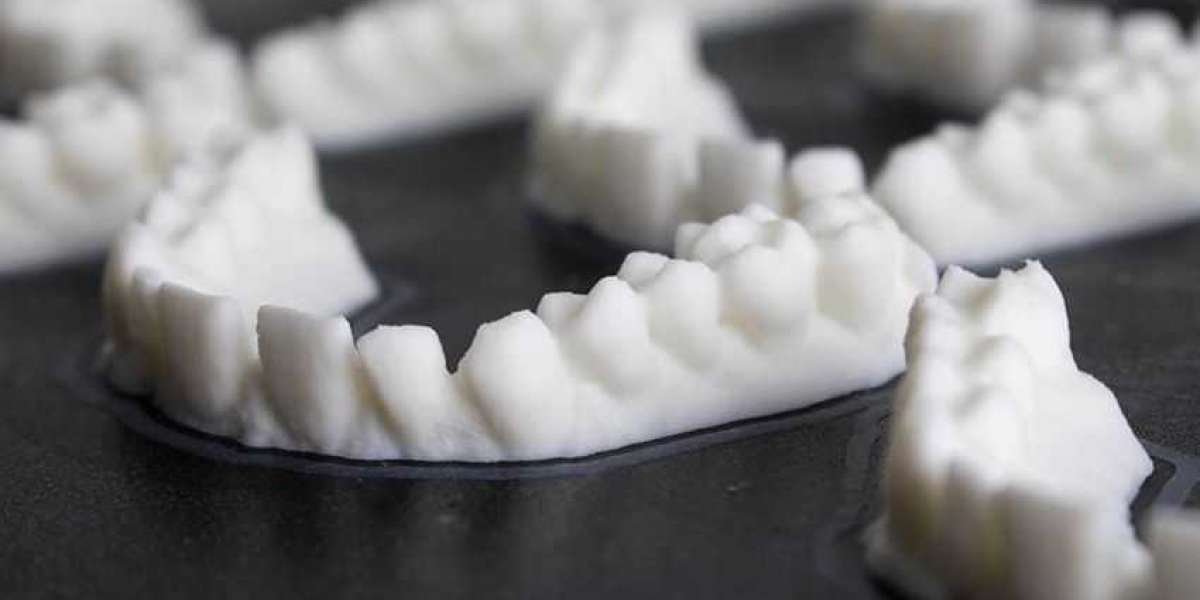Dental 3D Printing Market – Trends, Technology, and Regional Forecasts till 2030
The dental 3D printing market has seen significant growth in recent years, driven by the need for advanced, personalized dental care solutions. With innovations in digital imaging and materials, 3D printing is revolutionizing how dental professionals produce prosthetics, orthodontics, and implants. This blog explores the market segmentation and provides insights into emerging trends and forecasts through 2030.
1. Market Segmentation by Product and Service
The dental 3D printing market is divided into three primary categories:
- Equipment: This segment includes 3D printers specifically designed for dental applications, such as stereolithography (SLA) and digital light processing (DLP) printers. These printers are known for their precision and ability to produce complex structures.
- Materials: Materials include resins, ceramics, and metals used in creating dental models, crowns, bridges, and other prosthetics. Advancements in material technology are improving the strength, durability, and aesthetics of printed dental products.
- Services: Many dental practices outsource their printing needs to specialized 3D printing service providers, particularly for complex or custom models. This segment’s growth is fueled by demand from smaller clinics that may not have in-house printing capabilities.
2. Market Segmentation by Technology
Technology plays a crucial role in driving innovation in dental 3D printing:
- Vat Photopolymerization: This includes SLA and DLP methods, which are widely used for producing high-precision dental models. Vat photopolymerization provides high resolution and is commonly used in creating crowns, bridges, and implants.
- Other Technologies: Technologies like selective laser sintering (SLS) and material jetting also contribute to the dental 3D printing market, especially for applications requiring intricate geometries or robust materials.
3. Market Segmentation by Application
Dental 3D printing applications include:
- Prosthodontics: This is one of the largest applications within dental 3D printing, involving the production of prosthetics like dentures, crowns, and bridges.
- Orthodontics: The demand for clear aligners and custom orthodontic devices has boosted the need for 3D printing in orthodontics. This technology allows for precise customization based on patient needs.
- Other Applications: Dental 3D printing is also applied in educational models and surgical guides, supporting better outcomes in dental surgery and implantology.
4. Regional Analysis and Market Outlook till 2030
The dental 3D printing market is expanding globally, with key regions driving growth:
- North America: The presence of established healthcare infrastructure and early adoption of technology are boosting the market in this region. The U.S., in particular, has a strong base of dental 3D printing providers and innovative companies.
- Europe: Countries like Germany and the U.K. are key players in the European dental 3D printing market. A strong focus on healthcare advancements and government support for digital dentistry are notable drivers.
- Asia-Pacific: Rapidly growing healthcare sectors in countries such as China, Japan, and India are expected to fuel market growth in this region. Increased investments in dental technology are driving demand for affordable and efficient dental solutions.
- Rest of the World: Emerging markets in Latin America and the Middle East are witnessing a growing interest in dental 3D printing as healthcare infrastructure improves and access to advanced dental solutions expands.
Market Forecast and Conclusion
The dental 3D printing market is projected to grow significantly through 2030, driven by advancements in materials, technology, and an increasing demand for customized dental solutions. As the technology becomes more accessible and cost-effective, we can expect a broader range of dental applications, enhancing patient outcomes and reshaping dental care across regions.
For more information visit at MarketResearchFuture
Other Trending Reports














